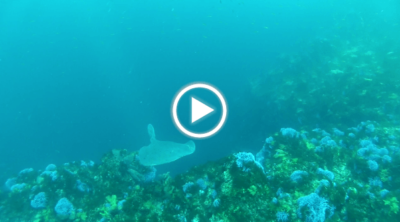
The Pacific Electric Ray, Torpedo californica, is one of 14 described species of electric rays, but is the only species limited with the west coast of the United States. These rays are also called torpedo rays, electric rays and pacific torpedo rays. Their habitat is found on sandy bottoms around rocky reefs and kelp forests. They are mostly solitary and nomadic and endemic to the coastal waters of the Pacific Ocean from Baja, California to British Columbia.
Rays can generate and control electrical charges at will. Muscle tissues in two kidney-shaped glands on their head can produce currents of up to 45 volts—an electrical shock strong enough to knock down an adult. Torpedo rays jaws are highly distensible, allowing it to swallow surprisingly large prey, a 4-foot female has been observed ingesting a coho salmon (Oncorhynchus kisutch) nearly half her length. The pacific torpedo employs several strategies to capture prey including using bottom topography to sneak up on prey, cupping its pectoral fins and executing a barrel roll to manipulate prey into the mouth.
Torpedo rays generate two types of electrical pulse: a regular ‘warning pulses’ when pursued and sharp, powerful blasts to stun their prey. Pacific electric rays are ovoviviparous with embryos feeding initially on yolk and eventually receiving additional food from the mother through absorption of uterine fluid.


